Welcome to RennTech.org Community, Guest
There are many great features available to you once you register at RennTech.org
You are free to view posts here, but you must log in to reply to existing posts, or to start your own new topic. Like most online communities, there are costs involved to maintain a site like this - so we encourage our members to donate. All donations go to the costs operating and maintaining this site. We prefer that guests take part in our community and we offer a lot in return to those willing to join our corner of the Porsche world. This site is 99 percent member supported (less than 1 percent comes from advertising) - so please consider an annual donation to keep this site running.
Here are some of the features available - once you register at RennTech.org
- View Classified Ads
- DIY Tutorials
- Porsche TSB Listings (limited)
- VIN Decoder
- Special Offers
-
OBD II P-Codes - Paint Codes
- Registry
- Videos System
- View Reviews
- and get rid of this welcome message
It takes just a few minutes to register, and it's FREE
Contributing Members also get these additional benefits:
(you become a Contributing Member by donating money to the operation of this site)
- No ads - advertisements are removed
- Access the Contributors Only Forum
- Contributing Members Only Downloads
- Send attachments with PMs
- All image/file storage limits are substantially increased for all Contributing Members
- Option Codes Lookup
- VIN Option Lookups (limited)

deilenberger
-
Posts
614 -
Joined
-
Last visited
-
Days Won
6
Content Type
Profiles
Events
Forums
External Paint Colors
Downloads
Tutorials
Links Directory
Collections
Store
Posts posted by deilenberger
-
-
Ynor - how has this project been coming along?
-
Quote
All this system is trying to do is to record the battery install information for later retrieval during diagnostics. It does not do anything, it just keeps the information with the vehicle as the owner typically is often vague about such minutia when asked.
JFP - I think the concern comes from the BMW family tree - where charge parameters were actually changed over the life of a battery to optimize the charge characteristics to match the battery age/use. Some early battery failures on BMWs have been blamed on the failure to reset the charging parameters when changing batteries.
As far as I can find - the charge voltages that Porsche uses are fine for any AGM battery that might be used... so no need to change the parameters.
-
Do they unlock with the drivers door handle (assuming keyless entry on the vehicle)?
And have you checked the rear-seat child interlock button on the drivers window control panel?
-
This is one of those.. "can't actually do this" sort of things. I read this same message, and after installing a new AGM battery (identical to the old one) called two different Porsche dealer service departments to ask about having it done. They both said "What?" "We don't do that.." So I visited an independent with several different high-end code tools. The tools thought they could do it - but they couldn't. Wouldn't write to the ECU. My DuraMetric doesn't even offer the option, so I bought an ICarScan tools that does - it offers to do it and then tells you it can't do it.
So I put a voltmeter up on the dash PCM multi-display as one of the lines in it. Found the system was happily charging away at around 13.2-13.5V no matter what (idle, higher engine speeds, more items on - it stayed the same..) Somehow I then pressed the "sport" button and spotted the charge voltage immediately jumped 1V higher (14.2-14.5V). Switched off "Sport" and it dropped back down. Tried manually selecting gears to get the same engine RPM/speed - the voltage didn't change. Went into "sport" mode - voltage went up, manually selected a higher gear to drop RPM - voltage remained up.
So - figured out what the deal was - Porsche was maximizing MPG in "normal" mode. That's where the MPG rating is taken - not in sport mode. So by limiting the charge voltage and current, that minimizes the load on the engine, which ups MPG. In sport mode no one gives a darn about MPG - so they let it charge in a "normal" manner.
Given that - there is no reason to program the ECU to the new battery. The charge circuitry is more interested in MPG than maximum battery life. MPG costs Porsche $$ (gas-guzzler tax) - which costs sales. The bean counters basically are setting your charging parameters.
Short version: Fugeddaboutit.
HTH,
-
Ynor - I would need a bit clearer version of the diagrams you're looking at (a page reference, or heading reference also would be handy) in order to track them down on my workshop manual.
-
I went through the wiring diagrams in the Porsche service manual. The only references to the Homelink were for the power (taken off fuse 47) and ground to it. There is a wiring diagram of the overhead console - that doesn't show it at all.
The module mounts in the nose of the Cayenne above the center grille. Dunno if there is any existing wiring in that area or not. It's vaguely possible that the Homelink module to the overhead console link is made via Can-Buss, lots of other stuff on a Cayenne is controlled that way - but minus any detailed wiring diagrams I can't actually say..
Good luck and please post what you figure out..
-
 1
1
-
-
I believe the system has to be calibrated.. dunno if Durametric can do this or not. May require a dealer visit. Why was the compressor replaced? They should be long lasting on the 958 series since it's filled with nitrogen not just air, and it doesn't take any air (and moisture) in.
-
Thanks for letting us know. This thread has been a topic of discussion on another forum where people are predicting/diagnosing a bad head gasket based on very sketchy data. Your thread serves as an example of the risk of doing that. And glad to hear it's up and running good! The oil cooler in the sump is an "interesting" design. Volvo many many decades ago used an oil/water oil cooler on the P1800S series of cars. It was infamous for causing the destruction of engines when it started leaking coolant into the oil. Luckily - it simply screwed into the block mounted oil-filter fitting (and the filter screwed into it) and had a few hoses to the cooling system, so it was rather easy to remove. Took about 30 minutes or so to eliminate that point of failure. Without it - the engines simply lasted about forever (one I owned made it to well over 375,000 miles and had never been opened up last I heard of it..)
-
Then i can go back to work on my interior. I have a new rear carpet installed already, just need to put the seatrs back and the mid console.
Somehow we missed the end of this story. Did it ever run correctly again? Don't leave us in suspense. Don't be "that guy.."
-
-
Anyone know where you can buy the special tool to suspend the caliper? Also when replacing the rear pads and rotors does the car have to be in neutral??? Are there any detailed steps on how the pads and new hardware kit are installed?
any updates on this?
Tool is actually a VW item and looks like this:
 About $54 from Samstag Tools
About $54 from Samstag ToolsConsiderably cheaper from SnapOn - $32/pair.. https://vw.snapon.com/SpecialToolsDetail.aspx?itemId=16580009%C2'> They're showing out of stock at the moment. They were in stock about 2 weeks ago when I bought mine.
And I never thought I'd be putting "cheaper from SnapOn" in a sentence.. go figure. In general I found their prices to be better then any of the aftermarket tool places for the VW/Porsche special tools.
-
That does clearly explain the fill/level check. Doing it with a garden-sprayer should make it relatively painless.
Yes, that makes better sense. I am planning to modify the garden sprayer to use for this as well.Here is a thread in tdiclub.com... just what I was looking for.
-
Most BMW transmissions, which use a similar design - you can only change about half the fluid at a time - since a lot of it is in the torque converter and most won't come out unless you disassemble and drain the transmission completely. I have heard numbers of 7-8 liters of fluid needed to do a change, so that pretty much agrees with the amount you've had come out. When the transmission is running - the oil pump in it keeps a lot of the fluid in the transmission fluid passages, solenoids, torque-converter. Once stopped it drains back down into the pan, which is what you experienced when you opened the drain plug without the engine running.
And if the fill plug really isn't accessible - then injecting the fluid into the transmission while the engine is running (then doing the gear-shift dance) through the overflow pipe seems the way to go. I suspect I'd be looking at modifying a cheap pressure garden sprayer to use..
-
Heard from my friend:
Yes it's very confusing to try to understand, and some of the info contradicts all the other instructions I've read. It really is the same as the BMW procedure, fill til it runs out, bring up to temp and fill again. Many are confused by the fact you have to fill through the drain plug. The parts schematic on Automobile Atlanta shows a fill plug, and there may be one but it's covered by the transfer case. Probably used in the mfg process for initial fill.
-
Found some references to the tools:
https://vw.snapon.com/specialtoolsdetail.aspx?itemid=18860006 - seemed to be the best price. This is 1389.. $117
https://vw.snapon.com/specialtoolsdetail.aspx?itemid=34720006 - best price again. This is 1390. $17.
You can create a personal account on this SnapOn website. I did to get the assembly/alignment pins for the Turbo brakes (a special tool)
Or you could watch:
The video shows what appears to be filling it via the drain hole/overflow tube.
-
The instructions:
There are more detailed instructions on the fill - but they're basically the same as these. No mention whatsoever is made of a separate ATF fill plug, not to say it doesn't exist (it should..) but the factory manual and AllData never mention it.
To me - the top tool they (1389) show appears that one of the probes would go up through the drain/level pipe and inject ATF above it. The need or use of the other probe may be for other transmissions.. The pipe like adaptor (1390) appears it would screw into the "drain" in place of the plug, and tool 1389 would go through it and snap into it. You would pump fluid up into the transmission and periodically pull out the 1389 tool to see if the oil level had reached the top of the pipe inside the fill/drain plug.
MORE - thinking about what they're doing.. IF the pipe like adaptor (1390) is the correct length, and the snap-on probe part of 1389 are the right length, the second leg on 1389 makes sense. If it is designed when assembled and inserted into 1390 to be the height of the level pipe inside the transmission - ie - the desired fluid height - then opening the valve on that leg when the system isn't pumping fluid would give an indication if the fluid is at the level desired. It all sort of makes sense.
In lieu of having the two tools - the pipe built into the drain/fill port can be used to check the level.
-
-
There is a warranty (2 years?) on the replacement parts that were installed under warranty.. so that shouldn't be a huge concern.
Is there a significant difference in wear on any of your tires (like one new one on one axle and the other 3 fairly well worn?) That sort of difference makes differentials (and the transfer case is more or less a rear-to-front differential) work much harder then they should, sometimes resulting in them giving up the ghost. A friend kept having the transfer case on his GMC Denalli go south on him - until I asked about tires. He'd had one tire replaced after a flat - the other 3 were fairly well worn. After his 3rd transfer case he asked me, I suggested new tires all the way around. He did - and the transfer case failures ended.
-
Goblin - guess you never got an answer to this question?
I considered doing the same thing on my '11 CTT - but realized the Porsche clock must be set by the PCM since there is no obvious way of setting it at the clock. This means some special wiring has to be in place to enable this, and I doubt if it is there on Cayennes that didn't originally come with the clock.
So - I'm considering adding an aftermarket VDO clock - using the factory cover with the clock opening for the center vent/speaker, but haven't been able to find the diameter of the hole in the cover to see if the VDO clock (which is cheaper by a factor of 10x) would fit. At least with the VDO if you only need to provide it with power for the clock and a dash-light controlled source for the interior lighting, so the wiring should be fairly simple and DIY friendly. It sets via a button on the front. The VDO clock face matches the existing instruments nicely.
If you've found out anything - please let us know..
BTW - link to the VDO clock on eBay: http://r.ebay.com/y3ImTk
-
Just off the top of my head - and assuming the Cayenne is close to balanced 50/50 weight distribution.. lifting one wheel will only need 1/4 of the weight capability of the entire vehicle. So a 2 ton vehicle - a 0.5 ton jackstand should be sufficient to support the load normally carried by one wheel.
-
The "Assembly Pins" can also be purchased at vw.snapon.com - for about $32 + shipping. Ordered a pair on Friday (and they do come as a pair..) SnapOn seems to be doing some of VW's special tools distribution. You can open a personal account at the website. Then search for the PN "T10439". For that amount of money IMHO it's not worth trying a bodge to get around buying the correct tools.
-
Eric,
Check under the vehicle menu on your multi-instrument-display in the dash. There is a setting there that allows for setting volume for all the audible warnings. It's probably down a few levels in the menus. To save it so it doesn't revert - after setting it - set your seat # again (press SET, then the seat# button.) Then after stopping and getting out of the vehicle - lock it using the key. If you don't do these - whatever it is now will simply reappear next time you unlock or start the vehicle.
-
-
I'm using whatever version was available for download about 3 days ago.. 21.60 sounds familiar. Can't tell without putting the dongle on the car and hooking up to it.
I think the All-Wheel-Drive on the diesel is completely different from the other Cayenne models. I seem to recall that it uses the Tourag system, not the normal Cayenne system. If you allow the unit to do an automatic scan of the car (where it determines what modules are fitted) - does it recognize the All-Wheel-Drive module? If you haven't it might be trying to connect using the one used in the non-diesel Cayennes.
EDIT: Found the description of the difference: http://www.autobytel.com/porsche/cayenne/2014/car-buying-guides/10-things-you-need-to-know-about-the-2014-porsche-cayenne-118872/ - Item #5
The 2014 Porsche Cayenne is available exclusively with all-wheel drive - there are no rear-wheel drive models available. The all-wheel drive system offered with the Porsche Cayenne varies, however, depending on which version of the SUV is ordered. Each of the gas-only editions of the Porsche Cayenne feature an all-wheel drive system that is designed to shuttle torque where it is needed most, which means that most engine output is sent to the rear wheels unless slippage is detected. The Cayenne Diesel and the Cayenne S Hybrid, however, offer an all-wheel drive system that maintains a steady front/rear torque split in a design that can also automatically lock its center differential in order to improve traction.
As far as support - you could try icarscan@launch.com - I sent them a message about finding a version of the software that's compatible with my Android tablet, haven't heard back from them yet.

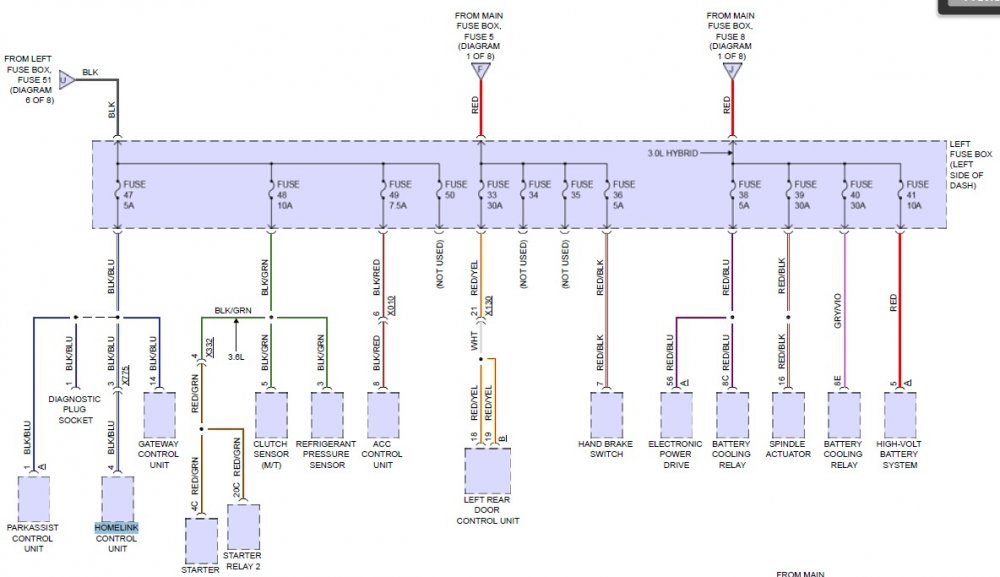
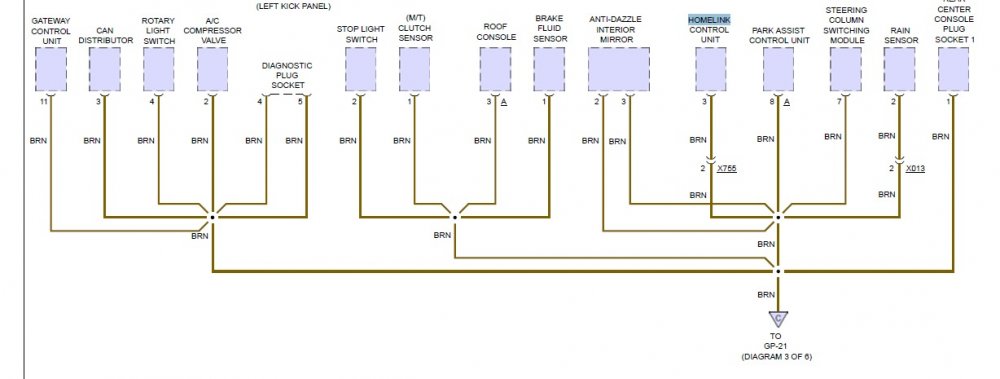
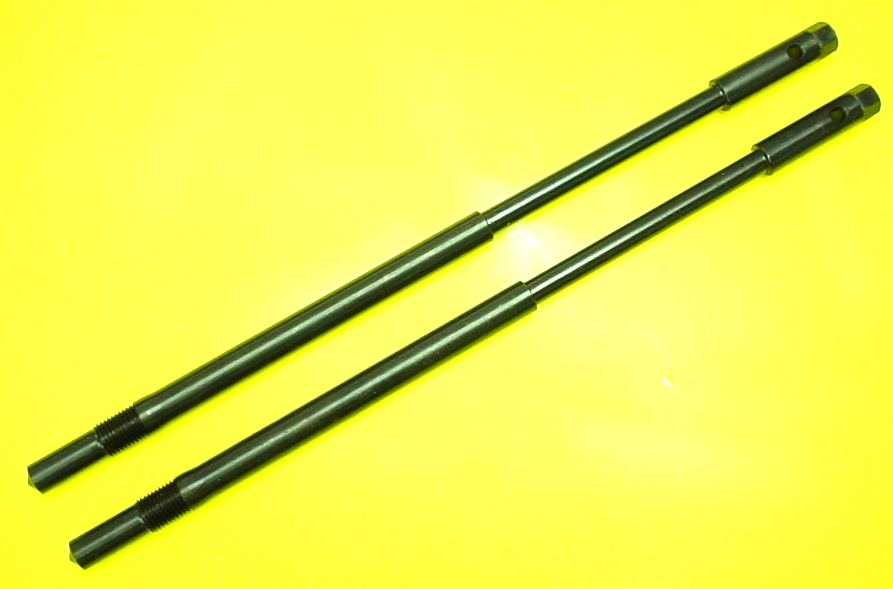 About $54 from Samstag Tools
About $54 from Samstag Tools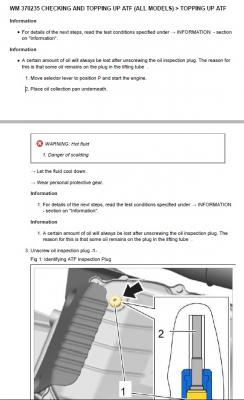
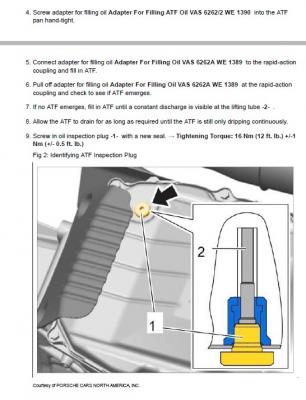

2013 Cayenne GTS PSE "cut-off"
in 92A (Cayenne, Cayenne Diesel, Cayenne S, Cayenne Turbo, Cayenne S Hybrid)
Posted · Edited by deilenberger
As far as a manual - the ones sold on ebay from the UK are a PDF of the PIWIS technical manuals. They are designed for experienced Porsche mechanics, so they don't assume this is your first time swinging a wrench. They annoyingly repeat every set of instructions (despite many being identical) for every model Cayenne that was made. (Base, diesel, /S, Turbo, V6-Turbo//S) It is about 11,000 pages in length.
The other legitimate option is a subscription to ALLDATA. They have a special for a 1 year new subscription for around $15. The data isn't as intensive as the PDF from Europe, but it is MUCH easier to find things, and extensive enough to handle the majority of items you might run into. The subscription is model specific, so if you have an /S or GTS - you won't be wading through page after page of irrelevant material on the diesel or turbo vehicles.